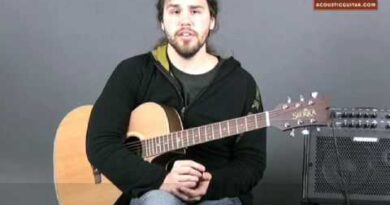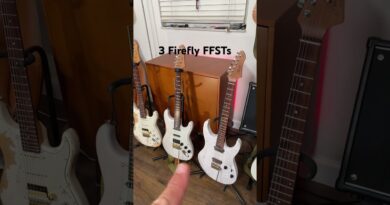How To EQ Electric Guitars
Miami follows up the compression video with one explaining how to eq guitars, specifically in the rock and metal genre! What video do you want to see next? Leave it in the comments below
Get Toneforge Jeff Loomis: https://joeysturgistones.com/products/toneforge-jeff-loomis
Check out our free stuff https://joeysturgistones.com/free
Learn how to mix https://nailthemix.com
Tags:home recording,audio production,mixing tutorials
#homerecording #audioproduction #mixingtutorialsq
#Electric #Guitars
Originally posted by UCRNZKbfxvdyFNYWrWNNf3AA at https://www.youtube.com/watch?v=VGzW5_rrYJE




My problem is that the guitar tone sounds good af on the daw. But once I export it and send it to my Google drive it sounds like a robot
Hie bro how can I get yur jst plugings
Oh good. ANOTHER "eq this way"
Video. JFC
Hi Joey thanks for video. You look different
Is IR a fancy word for a preset
Great video ????????
this video is really loud…
Great stuff…I think a good way to sum this up is that, like everything, the source should be great. The earlier you achieve “greatness”, the better…especially with something as harmonically dense as heavy guitar, which can get a little wonky under certain EQ circumstances. Of course, all of that goes out the window the moment someone sends you a murky amp track with no accompanying DI. That’s always the best.
S/o to you brother. You matter ♥ thank you
Excellent lesson! Thank you.
When it comes to FRFR, what frequencies should be focused on to give it a low tight low punch for palm muting and also sustain some pinch harmonics?
There is of course a lot of variety with tube and solid state amps by comparison, but some offer incredible low end response that you can feel without having to turn it to 11. By comparison, an FRFR right can feel more sterile when left flat on the EQ. Any tips?
that guitar tone sounds small and cheap
I love this dude
i don't know what it is. but when i use this eq i just keeps such a fuzzy sound on the guitars. when i use infinity eq from slate, it instant removes the fuzzyness.
oooo gunna go watch ur compresion video brb lmao
❤
Much appreciated good brother! This was super helpful!
Hi i buy it but i cant see it to studio one plugin folder i activate license and install it but i cant find it
Great information!
I'm was surprised when i cut around 120 hertz, it just sounded way better in my mix didn't know much so i just listen for rumbling in the lower frequencies and i cut it all up to 120, sounds thin on it's own but in a full mix they sound amazing
Why will higher harmonics crop up when decreasing the fundamental?
fxcking love this channel and presentation! <3
This is a well-presented content regarding eq thanks a whole lot.
I've been wathcing your videos for the last 3 hours. So much great contetn! It is insane.
I guess I'm just a stupid guitarist because I'm just as confused, maybe more so, than before I watched this.
i see you have 66.6k subs and, well, it only seems fitting that my evil ass subscribes.
I have a LOT of plug ins in my studio, Sturgis is one of the top rated here out of all of them.
Thank you! Love all your videos
Is that maneater by hall and oats I hear on the distorted example?
I want that EQ. I hope it's going to be cheaper than Fab filter
Miami! Question for you. I've recently noticed that (like you mentioned in the video) palm muting tends to get messy. It's like a delayed "bass response" that kicks in like a second after palm muting. upon review, it looks like it's the 150-250 range that produces this issue. When I surgical eq those areas out the problem is solved, but I lose life in the tone. Any tips for bringing that low end back in a controlled, healthy manner? Specifically for parts of the tune where the guitar is isolated and playing a major role (djent etc). Thank you!
It's been a learning curve realizing the different tone I need solo vs with a band. I like it warm when I'm by myself. However, with a band, it sounds best when I set my amp to bass at 3-4, mid 6-7, and treble 7-8. A friend who's professional and has toured and recorded a lot said he sets his amp knobs all at noon and let's the engineer mix it all through the boards. I'm old at playing but new to recording. Thanks for this!